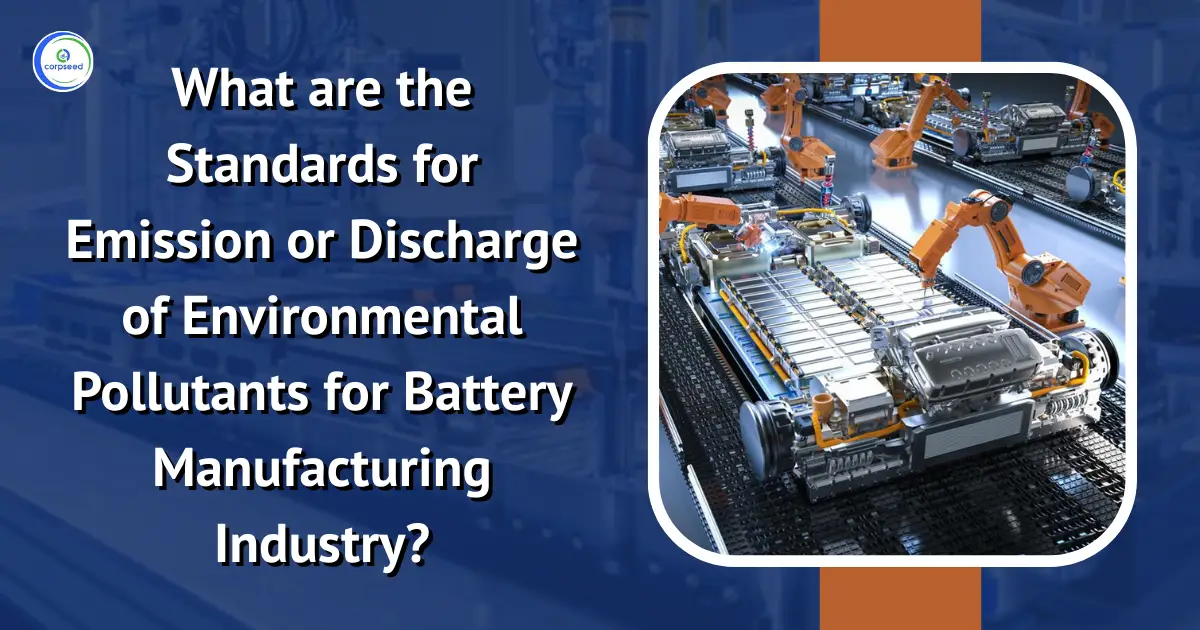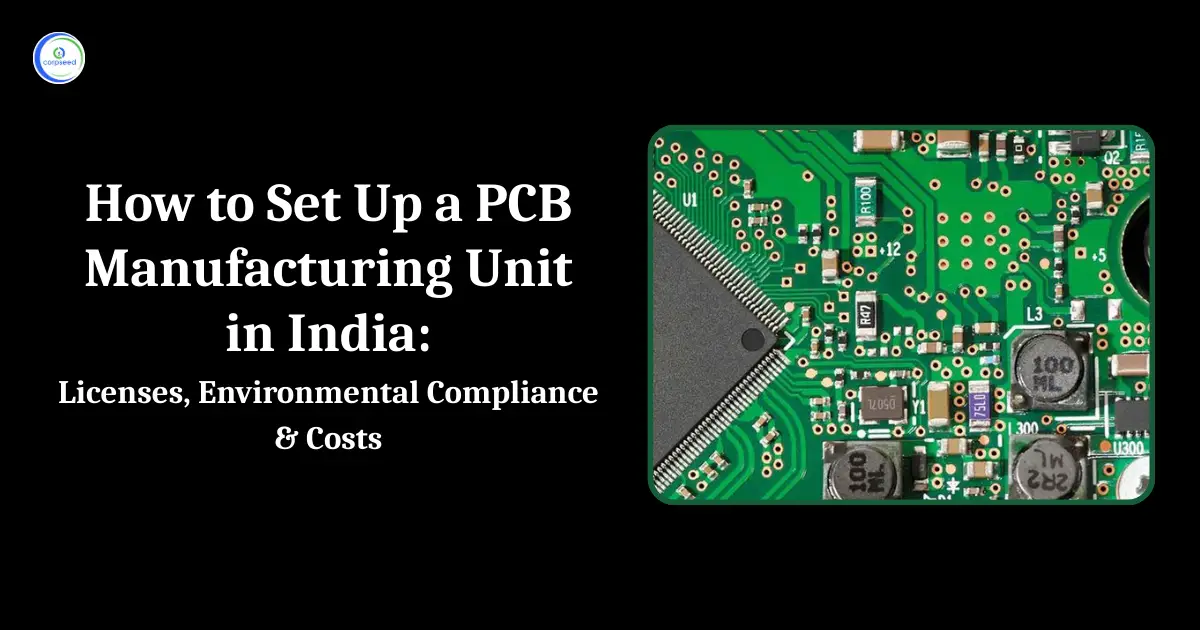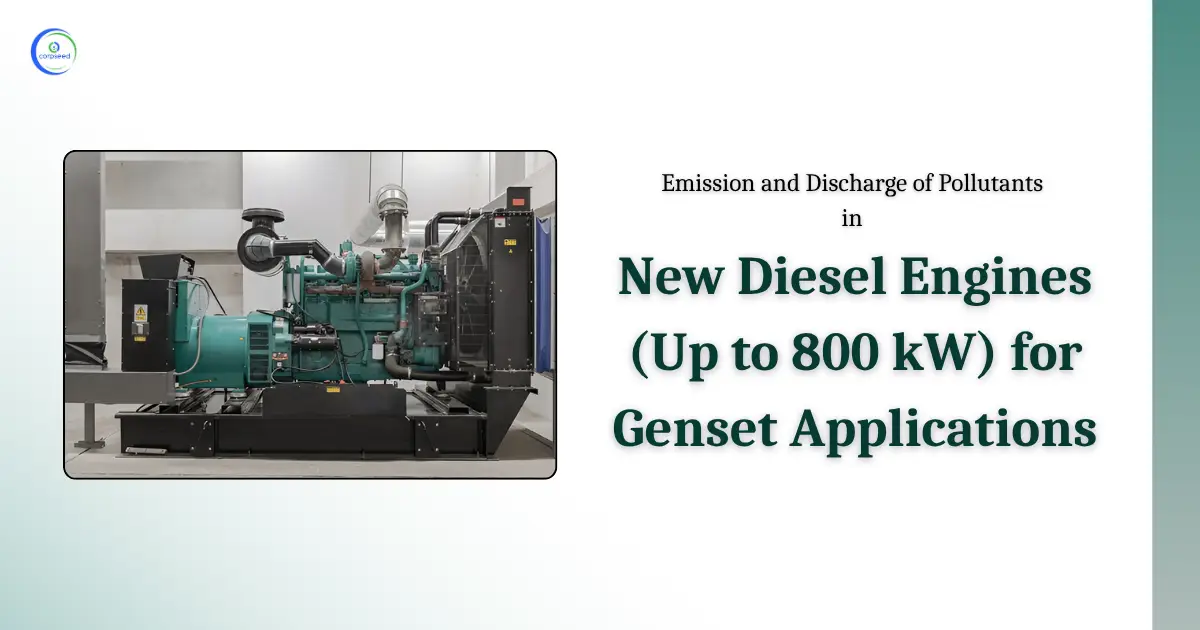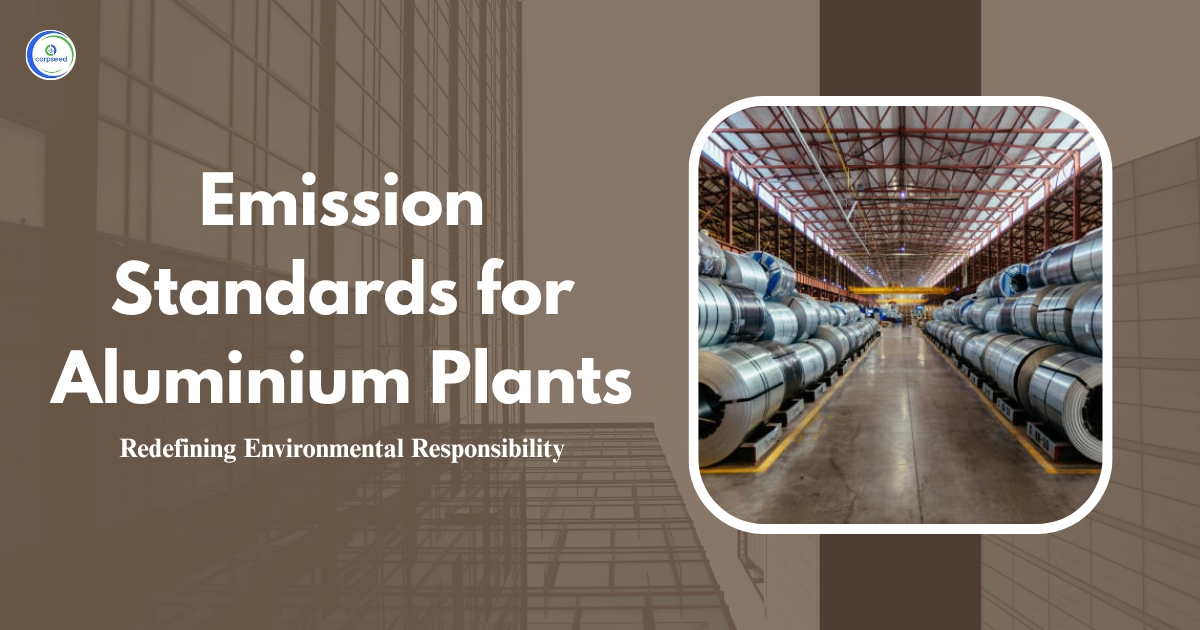The battery manufacturing industry produces vital energy storage systems for sectors such as automotive, renewable energy and electronics. However, its processes release pollutants that harm the environment and public health. To tackle this problem, regulatory authorities set strict emission and discharge standards. These standards prevent harmful substances such as lead, mercury, manganese, zinc and particulate matter from entering the air and water. They apply to lead acid and dry cell battery plants as well as secondary lead smelters. Manufacturers must use effective pollution control technologies and treatment systems to meet these limits. By complying with these regulations, the industry reduces its environmental impact and ensures legal compliance while promoting safer and more sustainable operations.
Table of Contents
--------------Blog Contact Form-------------
Overview of Battery Manufacturing Industry
The battery manufacturing industry, which includes the production of lead-acid and dry cell batteries as well as lead recycling, releases harmful pollutants such as lead, mercury, manganese, zinc and particulate matter into the air, water and soil. These pollutants pose serious risks to human health and the environment. To deal with these threats, the government enforces strict emission and waste discharge standards through the Environment (Protection) Rules, 1986. Under these regulations, manufacturers must obtain environmental compliance and environmental clearance (EC) to operate legally. These clearances ensure that manufacturers follow pollution control measures, minimising damage to the environment. By adhering to these standards, the industry promotes clean technologies, efficient waste management, and sustainable practices. Non-compliance can result in penalties, fines, or factory closures. These regulations encourage the adoption of environmentally friendly practices, ensuring that industrial growth does not come at the cost of environmental degradation, thus promoting a balance between industry and environmental responsibility.
Also Read: Battery Waste Management Amendment Rules, 2025
Emission Standards for the Battery Manufacturing Industry
Emission standards are important to ensure that the air quality around battery manufacturing plants is not degraded by harmful pollutants. These standards specify the concentrations of pollutants that can be safely emitted from various parts of a manufacturing industry. Below are the primary sources of emissions and their corresponding standards.
Lead Acid Battery Manufacturing Industry
Lead acid battery manufacturing industry are a significant source of lead and particulate matter emissions. Lead acid battery manufacturing plants typically have separate processes, each with different emission characteristics. The major sources include grid casting, oxide manufacturing, paste mixing, assembling and PVC section processes. Below is a table that highlights the emission standards for each source of pollution in lead acid battery manufacturing.
| S.No. | Source | Pollutant | Concentration based Standards (mg/Nm3) |
| 1 | Grid Casting | Lead | 10 |
| Particulate Matter | 25 | ||
| 2 | Oxide Manufacturing | Lead | 10 |
| Particulate Matter | 25 | ||
| 3 | Paste Mixing | Lead | 10 |
| Particulate Matter | 25 | ||
| 4 | Assembling | Lead | 10 |
| Particulate Matter | 25 | ||
| 5 | PVC Section | Particulate Matter | 150 |
Note:
- To comply with these emission standards, all emissions from the above sources must be routed through a stack connected to a hood and fans. In addition, the installation of control devices such as bag filters or ventury scrubbers is highly recommended to ensure pollutant concentrations remain within permissible limits.
- In addition, the minimum stack height for lead acid battery manufacturing industry should be 30 meters. This helps to disperse pollutants effectively and reduce the local impact on air quality.
Dry Cell Manufacturing Industry
Dry cell batteries, often used in small appliances, also contribute to environmental pollution during their production. Emission standards for dry cell manufacturing industry focus primarily on particulate matter and manganese, a key component of many battery types.
| S.No. | Pollutant | Concentration based Standards (mg/Nm3) |
| 1 | Particulate Matter | 50 |
| 2 | Manganese as Mn | 5 |
Note:
- To comply with the respective standards, all the emissions from abovementioned sources shall be routed through stack connected with hood and fan. In addition to above, installation of control equipment viz. bag filter/ventury scrubber is also recommended.
- The minimum stack height for lead acid battery manufacturing industry should be 30 m.
Secondary Lead Smelters
Secondary lead smelters recycle lead from old batteries and they are another significant source of lead emissions. Exposure to lead can cause serious health problems, especially neurological damage, so strict standards are necessary to protect workers and the surrounding community from harm.
| S.No. | Pollutant | Concentration based Standards |
| 1 | Lead as Pb | 10 mg/Nm3 |
| 2 | Particulate matter | 50 mg/Nm3 |
| 3 | Minimum stack height | 30 m |
Liquid Effluent Discharge Standards
In addition to air pollution, battery-manufacturing industry also generate liquid waste that must be treated before being released into water bodies. These wastes often contain harmful substances such as lead, manganese, mercury, and zinc, which can contaminate water sources and disrupt aquatic ecosystems.
Lead Acid Battery Manufacturing Industry Effluent Standard
The discharge of liquid wastes from lead acid battery manufacturing plants is regulated to prevent contamination of water resources. The major pollutants in effluents are lead, suspended solids, and pH levels. Effluent treatment methods should include filtration, sedimentation, and chemical treatment to bring pollutants within these specified limits prior to discharge. The discharge standards for these pollutants are given below:
| S.No. | Pollutant | Concentration based Standards |
| 1 | pH | 6.5-8.5 |
| 2 | Suspended solids | 50 mg/1 |
| 3 | Lead | 0.1 mg/l |
Dry Cell Manufacturing Industry Effluent Standards
Effluent materials from dry cell manufacturing industry also pose a threat to the environment, especially from the presence of manganese, mercury, and zinc. For dry cell industry, as with lead acid industry, it is critical that effluents are treated to meet these standards before they are released into the environment. The discharge standards for these pollutants are as follows:
| S.No. | Pollutant | Concentration based Standards |
| 1 | pH | 6.5 - 8.5 |
| 2 | Total Suspended Solids | 100 mg/l |
| 3 | Manganese as Mn | 2 mg/l |
| 4 | Mercury as Hg | 0.02 mg/l |
| 5 | Zinc as Zn | 5 mg/l |
Also Read: Lithium-Ion Battery Recycling Plant: A Key to Sustainable Energy Storage
Compliance with Environmental Standards
To meet environmental compliance, battery-manufacturing plants must take several steps. These steps typically include installing and maintaining emission control systems, conducting regular monitoring and reporting, and ensuring waste treatment systems are operating efficiently.
Emission Control System
For lead acid and dry cell manufacturing industry, key emission control technologies include:
- Bag Filters: These are used to capture particulate matter from exhaust gases before they are released into the atmosphere.
- Ventury Scrubbers: These systems spray liquid to capture particles and gases, preventing them from escaping into the air.
- Hood and Fan Systems: These systems are used to capture pollutants at the source and direct them towards the treatment equipment.
Monitoring and Reporting
Battery manufacturing industry are required to regularly monitor levels of pollutants in both air emissions and water wastewater to ensure compliance with environmental standards. This includes periodic sampling, laboratory testing, and data analysis. Monitoring helps catch any deviations and supports timely corrective action. Reports on pollutant concentrations, control measures and equipment performance must be submitted to regulatory authorities. These include the Central Pollution Control Board (CPCB), the State Pollution Control Board (SPCB) and the Ministry of Environment, Forest and Climate Change (MoEFCC). These bodies also conduct regular inspections and audits to verify the accuracy of reported data. Effective monitoring and reporting are critical to achieving environmental compliance and maintaining the environmental clearances required to operate legally and responsibly.
Conclusion
The battery manufacturing industry, including lead acid battery manufacturing industry and dry cell manufacturing industry, plays an important role in modern society. To mitigate these impacts, regulatory authorities have implemented strict emission and waste discharge standards, ensuring manufacturers comply with pollution control measures. By meeting these standards, the industry reduces harmful emissions such as lead, mercury, manganese, and particulate matter, while also protecting water resources from contamination. Effective pollution control techniques such as bag filters, scrubbers, and monitoring systems are essential for compliance. Regular monitoring and reporting helps maintain environmental standards and ensures the sustainable operation of battery industry. Compliance with these regulations strikes a balance between industrial development and environmental responsibility, promoting cleaner technologies and practices in the battery-manufacturing sector.
This portion of the site is for informational purposes only. The content is not legal advice. The statements and opinions are the expression of author, not corpseed, and have not been evaluated by corpseed for accuracy, completeness, or changes in the law.
BOOK A FREE CONSULTATION
Get help from an experienced legal adviser. Schedule your consultation at a time that works for you and it's absolutely FREE.







_Corpseed.webp)
.webp)
